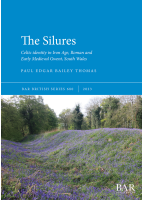Description
Whether certain ancient British communities could be termed Celtic has been an ongoing debate since data first appeared in the 1950s.This study attempts to determine if Gwent could be defined as Celtic. Earlier research suggests that it is possible and that its landscape was managed through multiple estates. However, when combined with newer evidence and analysis, a picture emerges of the Silures from the earliest Iron Age until the arrival of the Normans, suggesting that they should also be considered.
This book also focuses on the evolution of Silurian identity over time and the academic debates surrounding Celticity and multiple estates. The patterns of cultural continuity and their relationship with south-eastern Wales are analysed in depth. Evidence is drawn from a variety of sources, such as material culture, proof of land management strategies, comments from Classical authors, medieval documents and secondary interpretations.
AUTHOR
Dr Paul Edgar Bailey Thomas is a history teacher. He graduated from the University of Wales (Newport) and conducted his post graduate studies at the University of South Wales and Bangor University.
REVIEW
‘This book is wide-ranging and contributes an important degree of originality. I know of no other studies that cover such an extensive overview of the ‘Celt debate’ with respect to Gwent.’ Professor Raymond Howell, University of Wales











